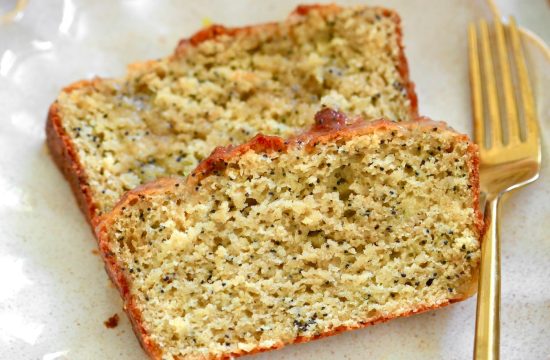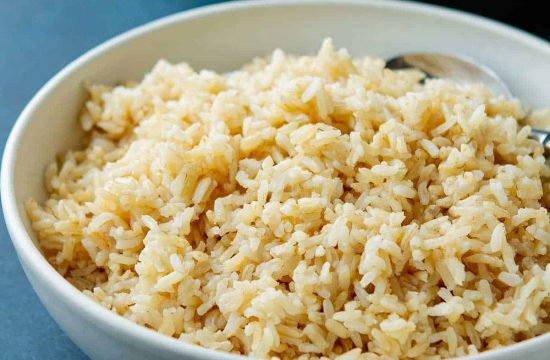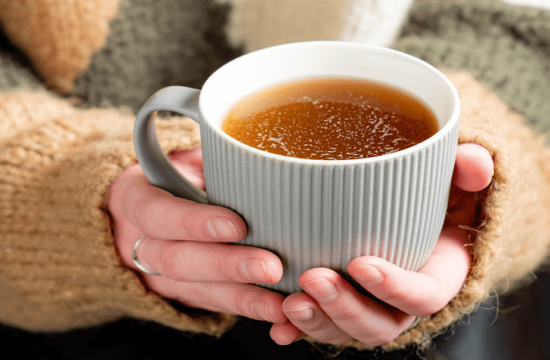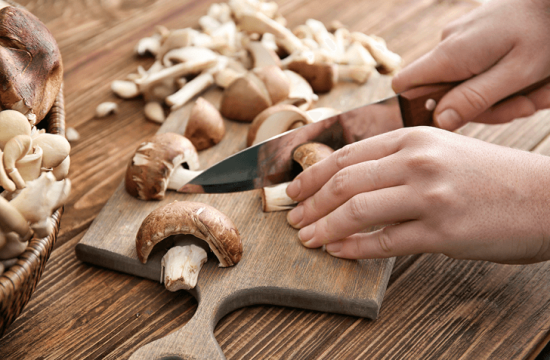The 3rd chapter of Nidanasthanam of Ashtanga Hridayam is named as Raktapitta Kasa Nidanam Adhyaya. This chapter deals with the explanation of ‘diagnosis of bleeding disorders and cough’.
The topics covered in this chapter include –
– Causes and pathogenesis of bleeding disorders
– Premonitory symptoms of bleeding disorders
– Clinical features of bleeding disorders
– Prognosis of bleeding disorders
– Diagnosis of cough
– Premonitory symptoms of cough
– Pathogenesis of cough
– Features of cough of vata origin
– Features of cough of pitta origin
– Features of cough of kapha origin
– Features of cough due to trauma to the lungs
– Cough due to consumption, pulmonary tuberculosis
– Prognosis of different kinds of cough
Pledge by the author(s)
अथातो रक्तपित्तकासनिदानं व्याख्यास्याम: ।
इति ह स्माहुरात्रेयादयो महर्षय: ।
After having offered prayers to the God, henceforth we are going to explain the chapter pertaining to the explanation of ‘diagnosis of bleeding disorders and cough’. Thus say (pledge) atreya and other sages.
Raktapitta Nidana and Samprapti (causes and pathogenesis)
भृशोष्णतीक्ष्ण कट्वम्ललवणादिविदाहिभिः ।
कोद्रवोद्दालकैश्चान्नैस्तद्युक्तैरतिसेवितैः ॥ १ ॥
कुपितं पित्तलैः पित्तं द्रवं रक्तं च मूर्च्छितै: ।
तेमिथस्तुल्यरूपत्वमागम्य व्याप्नुतस्तनुम् ॥ २ ॥
पित्तं रक्तस्य विकृतेः संसर्गाद्दूषणादपि ।
गन्धवर्णानुवृत्तेश्च रक्तेन व्यपदिश्यते ॥ ३ ॥
प्रभवत्यसृजः स्थानात्प्लीहतोयकृतश्च तत् ।
Over-indulgence in food and drinks that are profoundly hot (heat producing), penetrating deep, pungent, sour, salt and such others that cause burning sensation during digestion, use of Kodrava (Paspalum Scrobiculatum), Uddalaka (millet and such others), in more quantity and other causes (activities) which increase pitta. Pitta which is in liquid from and Rakta (blood) which possesses closer affinity, gets vitiated, mixed together, assume identical qualities, spread throughout the body, (and produce the disease Raktapitta) pitta being the bye-product of Rakta (blood) because of their admixture (Samsargat) and property of vitiating each other (dushanat), and resemblance in smell and color, Pitta is expressed and exhibited as Rakta (blood). The disease Raktapitta originates from the seat of Rakta (blood), that is the Pliha (spleen) and Yakrit (liver).
Notes: Pitta and Rakta both being Agneya possess similar properties and greater affinity. Both get increased by the same cause, at the same time and give rise to the disease-Raktapitta, characterized by bleeding from different parts of the body. Use of the terms “Pitta in liquid form” is to indicate the Pacaka and Ranjaka Pitta, especially the former, present in the Amasaya (stomach), Yakrt (liver) and Pliha (spleen), which become the sites of origin of the diseases. The blood that comes out is vitiated especially by Pitta, associated with Kapha and Vata to a little extent. It will be having increased heat, liquidity, foul smell, tendency to penetrate the walls of the vessels and tissue cells, flows out continuously; the property of clotting being either diminished or lost. Identification of this disease in modern parlance has not so far been satisfactory, diseases like polycythemia vera, purpura, hemophilia, etc. which are primarily hemorrhagic are some of the probables, the first one most likely.
Purvarupa (premonitory symptoms)
शिरोगुरुत्वमरुचिःशीतेच्छाधूमकोऽम्लकः ॥ ४ ॥
छर्दिश्छर्दितबैभत्स्यंकासःश्वासोभ्रमःक्लमः ।
लोहलोहितमत्स्यामगन्धास्यत्वंस्वरक्षयः ॥ ५ ॥
रक्तहारिद्रहरितवर्णतानयनादिषु ।
नीललोहितपीतानांवर्णानामविवेचनम् ॥ ६ ॥
स्वप्नेतद्वर्णदर्शित्वंभवत्यस्मिन्भविष्यति ।
Feeling of heaviness of the head, loss of taste (or appetite), desire for cold, feeling of hot fumes coming out (from the stomach through the mouth), (increased) acidity, vomiting, fear from vomiting (by the sight of the vomited materials), cough, dyspnoea, dizziness, exhaustion, feeling of the smell of iron, blood and raw fish in the mouth, loss of voice, red, turmeric (deep yellow) or green color of the eyes etc. (skin, tongue, nails, urine, feces), inability to recognize blue, red and yellow colors, seeing objects of the same color (red, deep yellow or green) in dreams – are the symptoms of the forthcoming disease.
Rupa (clinical features)
ऊर्ध्वं नासाक्षिकर्णास्यैर्मेढ्रयोनिगुदैरधः॥७॥
कुपितं रोमकूपैश्च समस्तैस्तत्प्रवर्तते।
It (vitiated blood) comes out from the upper parts through the nose, eyes, ears and mouth; from the lower parts through the penis (urethra), Yoni (vagina and genital tract) and rectum; from all the channels, the hair follicles (in the skin) and all other sites (of both upper and lower regions).
Notes: – The disease is of three types-viz, Urdhvagata-bleeding in upward direction, Adhogata-bleeding in downward direction and Ubhaya marga gata or Tiryaggata-bleeding from upward, downward and all directions simultaneously. Pitta is the primary causative Dosha for all the types, but the secondary or associate Dosha is different, Kapha for the upward type, Vata for the downward type and all the three for the third type.
Sadhyasadhyata (Prognosis)
ऊर्ध्वं साध्यं कफाद्यस्मात्तद्विरेचन साधनम्॥८॥
बह्वौषधं च पित्तस्यविरेको हि वरौषधम् ।
अनुबन्धीकफोयश्चतत्रतस्यापिशुद्धिकृत् ॥ ९ ॥
कषायाः स्वादवोऽप्यस्यविशुद्धश्लेष्मणोहिताः ।
किमुतिक्ताःकषायावा ये निसर्गात्कफापहाः ॥ १० ॥
Urdhavaga (upward direction) is sadhya (curable) because of Kapha (being the associate Dosha); for this (the disease) purgation is the ideal method of treatment, of availability of large number of drugs; for mitigating Pitta, purgation is the best therapy, and it also clears (mitigates) Kapha, the associate Dosha Kashayas (recipes/medicinal forms such as fresh juice, infusion, decoction, powder etc.) though sweet are suitable for the person who has been freed from Kapha; then what to say of those recipes which are bitter or astringent, which are by nature mitigates of Kapha.
Notes: – Pratimargaharana – conquering the disease through the opposite direction – is one of the methods of treatment which is applicable to this disease. Diseases having upward and downward directions are controlled by creating movement in the opposite directions respectively, eg. Severe vomiting is controlled by producing purgation and severe diarrhea by producing vomiting. Similarly, for control of bleeding of upward direction, purgative therapy and of downward direction, emesis therapy are said to be ideal.
Sadhyasadhyata (Prognosis)
अधोयाप्यं चलाद्यस्मात्तत्प्रच्छर्दनसाधनम् ।
अल्पौषधं च पित्तस्यवमनंनवरौषधम् ॥ ११ ॥
अनुबन्धीचलोयश्चशान्तयेऽपिनतस्य तत् ।
कषायाश्चहितास्तस्यमधुरा एव केवलम् ॥ १२ ॥
Adhoga (downward type) is Yapya (incurable, controllable) because of Chala (Vata being the associate Dosha), for it (the disease) emesis is the means and ideal method of treatment and of availability of a smaller number of herbs. For mitigating Pitta, emesis is not the ideal therapy; Chala (Vata) being the associate Dosha, the recipes which are astringent or bitter or incapable to mitigate the best ones in this condition are only the recipes which have sweet taste.
Sadhyasadhyata (Prognosis)
कफमारुतसंसृष्टमसाध्यमुभयायनम् ।
अशक्यप्रातिलोम्यत्वादभावादौषधस्य च ॥ १३ ॥
न हि संशोधनं किञ्चिदस्त्यस्यप्रतिलोमगम् ।
शोधनंप्रतिलोमं च रक्तपित्तेभिषग्जितम् ॥ १४ ॥
एवमेवोपशमनंसर्वशोनास्यविद्यते ।
संसृष्टेषु हि दोषेषुसर्वजिच्छमनं हितम् ॥ १५ ॥
Ubhayayana (both directions simultaneously) type is Asadhya (incurable) because of, Kapha and Vata are the associate Doshas. It is impossible also because of administering therapies opposite of the directions (of bleeding) and of non-availability of drugs (in sufficient number). There is no purificatory therapy which is opposite of both the directions, but for Raktapitta, the ideal treatment is purifactory therapy opposite to the direction (of bleeding). Similarly there is no palliative method for all the Doshas; and when all the Doshas are mixed together, simultaneous mitigation of all them is most suitable
Sadhyasadhyata (Prognosis)
तत्रदोषानुगमनं सिरास्रैवलक्षयेत् ।
उपद्रवांश्च विकृतिज्ञानतस्तेषु चाधिकम् ॥ १६ ॥
आशुकारीयतः कासस्तमेवातः प्रवक्ष्यति ।
It this disease, (Raktapitta) recognition of the (vitiating) Dosha is similar to that described in venesection (chapter 27 of Sutrasthana). Its Upadrava (secondary diseases, complications) are those enumerated in) Vikriti Vijnaniya (chapter 5 of Sarira Sthana). Among them Kasa (cough) is going to kill the person soon, hence its description further on.
Kasa Nidana (diagnosis of cough)
पञ्चकासाः स्मृता वातपित्तश्लेष्मक्षतक्षयैः॥१७॥
क्षयायोपेक्षिताः सर्वे बलिनश्चोत्तरोत्तरम्।
Kasa (cough) is said to be of five kinds (one each) from Vata, Pitta, Shleshman (Kapha); from Kshata (injury to the chest (lungs) and Kshaya (consumption). All of them lead on to Kshaya if neglected and are strong in the succeeding order (succeeding kind stronger than its preceding kind).
Purvarupa (premonitory symptoms)
तेषां भविष्यतां रूपं कण्ठे कण्डूररोचकः॥१८॥
शूकपूर्णाभकण्ठत्वं
Their premonitory features are – irritation in the throat, loss of taste/appetite, feeling as though the throat is full of thorns.
Samprapti (pathogenesis)
तत्राधोविहतोऽनिलः।
ऊर्ध्वं प्रवृत्तः प्राप्योरस्तस्मिन्कण्ठे च संसजन्॥१९॥
शिरः स्रोतांसि सम्पूर्य ततोऽङ्गान्युत्क्षिपन्निव।
क्षिपन्निवाक्षिणीपृष्ठमुरः पार्श्वे च पीडयन्॥२०॥
प्रवर्तते सवक्त्रेण भिन्नकांस्योपमध्वनिः।
हेतुभेदात्प्रतीघात भेदोवायोः सरंहसः॥२१॥
यद्रुजा शब्दवैषम्यं कासानां जायते ततः।
tatrādhovihato’nilaḥ |
Anila (Vata) obstructed in its downward movement, begins to move upwards, reaching the chest, invades the throat and then filling the channels of the head, makes for violent upward movement of the body, the eyes, back and chest; pain in the flanks, and comes out of the mouth producing noise resembling the sound of a broken bell-metal. From the difference in the causes (causative Dosha) there is difference in the nature of obstruction of the forceful Vata. Hence there occurs differences in the pain (symptoms) and the sound of cough.
Vataja Kasa – (features of cough of Vata origin)
कुपितो वातलैर्वातः शुष्कोरः कण्ठवक्त्रताम्॥२२॥
हृत्पार्श्वोरः शिरःशूलं मोहक्षोभस्वरक्षयान्।
करोति शुष्कं कासं च महावेगरुजास्वनम्॥२३॥
सोऽङ्गहर्षी कफं शुष्कं कृच्छ्रान्मुक्त्वाल्पतां व्रजेत्।
Vata undergoing aggravation (increase) from aggravating causes, produces dryness of the chest, throat and mouth, pain in the (region of) heart, flanks and head; delusion, agitation of the mind, loss of voice, gives rise to dry cough accompanied with violent bouts, severe pain and great noise, and horripilation. The person brings out dry sputum with difficulty and after that it (cough) gets reduced.
Pittaja Kasa (features of cough of Pitta origin)
पित्तात्पीताक्षिकफता तिक्तास्यत्वं ज्वरोभ्रमः॥२४॥
पित्तासृग्वमनं तृष्णा वैस्वर्यं धूमकोऽम्लकः।
प्रततं कासवेगेन ज्योतिषामिवदर्शनम्॥२५॥
From Pitta, there is yellow coloration of the eyes and sputum, bitter taste in the mouth, fever, dizziness, vomiting of Pitta and Asrk (blood), thirst, hoarseness, feeling of hot fumes coming out through the mouth, (increased) acidity, continuous cough keeping the patient gazing at the stars, sitting up with his face turned upward.
Kaphaja Kasa (features of cough of Kapha origin)
कफादुरोऽल्परुङ्मूर्धहृदयं स्तिमितं गुरु।
कण्ठोपलेपः सदनं पीनसच्छर्द्यरोचकाः॥२६॥
रोमहर्षो घनस्निग्धश्वेतश्लेष्मप्रवर्तनम्।
From Kapha, there is mild pain in the chest, head and (region of) the heart, very little movement (of the chest) and feeling of heaviness, coating of the throat, debility, running in the nose, vomiting, loss of taste/appetite, horripilation; thick, sticky, white sputum is expelled out.
Kshataja Kasa (features of cough due to trauma to lungs)
युद्धाद्यैः साहसैस्तैस्तैः सेवितैरयथाबलम्॥२७॥
उरस्यन्तः क्षतेवायुः पित्तेनानुगतोबली।
कुपितः कुरुते कासं कफं तेन सशोणितम्॥२८॥
पीतं श्यावं चशुष्कं च ग्रथितं कुथितं बहु।
ष्ठीवेत्कण्ठेन रुजता विभिन्नेनेव चोरसा॥२९॥
सूचीभिरिव तीक्ष्णाभिस्तुद्यमानेन शूलिना।
पर्वभेदज्वरश्वास तृष्णावैस्वर्य कम्पवान्॥३०॥
पारावत इवाकूजन्पार्श्वशूली ततोऽस्य च।
क्रमाद्वीर्यं रुचिः पक्ता बलं वर्णश्च हीयते॥३१॥
क्षीणस्य सासृङ्मूत्रत्वं स्याच्च पृष्ठकटीग्रहः।
By indulgence in fighting in war, adventurous activities etc., in excess of one’s strength, there occurs a wound inside the chest, (lungs); Vayu getting increased and associating with the Pitta, produces cough. By these, the patient brings out sputum mixed with blood, yellow or black in color, dry (non-unctuous), nodular, foul smelling and large in quantity; severe pain in the throat, pain in the chest as though pricked by sharp needles, pain in the joints, fever, dyspnea, thirst, hoarseness, tremors; cooing sound like that of a pigeon comes out of the throat, pain in the flanks also appear; vigour, desire for food, digestion, strength and color (complexion) get diminished steadily, emaciation, urine is mixed with blood and catching pain in the back and waist develop.
Kshayaja Kasa (cough due to consumption, pulmonary tuberculosis)
वायुप्रधानाः कुपिताधातवोराजयक्ष्मिणः ॥ ३२ ॥
कुर्वन्तियक्ष्मायतनैः कासं ष्ठीवेत्कफं ततः ।
पूतिपूयोपमं पीतं विस्रं हरितलोहितम् ॥ ३३ ॥
लुच्येतेइवपार्श्वे च हृदयं पततीव च ।
अकस्मादुष्णशीतेच्छाबह्वाशित्वं बलक्षयः ॥ ३४ ॥
स्निग्धप्रसन्नवक्त्रत्वं श्रीमद्दर्शननेत्रता ।
ततोऽ स्यक्षयरूपाणिसर्वाण्याविर्भवन्ति च ॥ ३५ ॥
All the Dhatus (Doshas) with the predominance of Vata, produce cough in patients of Rajayakshma (pulmonary tuberculosis). The patient brings out sputum which is putrefied, resembling pus, yellow, foul smelling, green or red. The patient feels as though his flanks are sliding down, heart falling down, develops desire for hot or cold comforts without any (apparent) reason, consumes too much of food but still loses strength; the face appears unctuous, pleasing to look at, has radiant look and glittering eyes; thereafter, all the symptoms of consumption, begin to manifest gradually.
Prognosis of different kinds of cough
इत्येषक्षयजः कासः क्षीणानां देहनाशनः ।
याप्योवाबलिनां तद्वत्क्षतजोऽ भिनवौ तु तौ ॥ ३६ ॥
सिध्येतामपि सानाथ्यात्साध्यादोषैः पृथक्त्रयः ।
मिश्रायाप्याद्वयात्सर्वेजरसास्थविरस्य च ॥ ३७ ॥
Thus, this Kshayaja Kasa is going to destroy the body of those who are emaciated, or it persists for long in the strong; similarly the Kshataja Kasa also, both may become curable if they are of recent onset and endowed with richness (excellence) of all the four limbs of treatment. The three kinds, arising from one Dosha separately are curable, those from mixture of two Doshas are incurable, but controllable, and also that arising from old age in the aged.
Prognosis of different kinds of cough
कासाच्छ्वासक्षयच्छर्दि स्वरसादादयो गदाः।
भवन्त्युपेक्षया यस्मात्तस्मात्तं त्वरयाजयेत्॥३८॥
By neglecting cough, diseases like dyspnea, consumption (tuberculosis), vomiting loss of voice etc. will occur. Hence it should be won (treated effectively) quickly.
इति श्री वैद्यपति सिंहगुप्तसूनु श्रीमद्वाग्भटविरचितायामष्टाङ्गहृदयसंहिताया तृतीये निदानस्थाने रक्तपित्तकासनिदानं नाम तृतीयोऽध्याय: ।।१॥
Thus ends the chapter – Raktapitta and Kasa Nidana – the third in Nidanasthana of Astangahrdaya Samhita composed by Srimad Vagbhata, son of Sri Vaidyapati Simhagupta.















